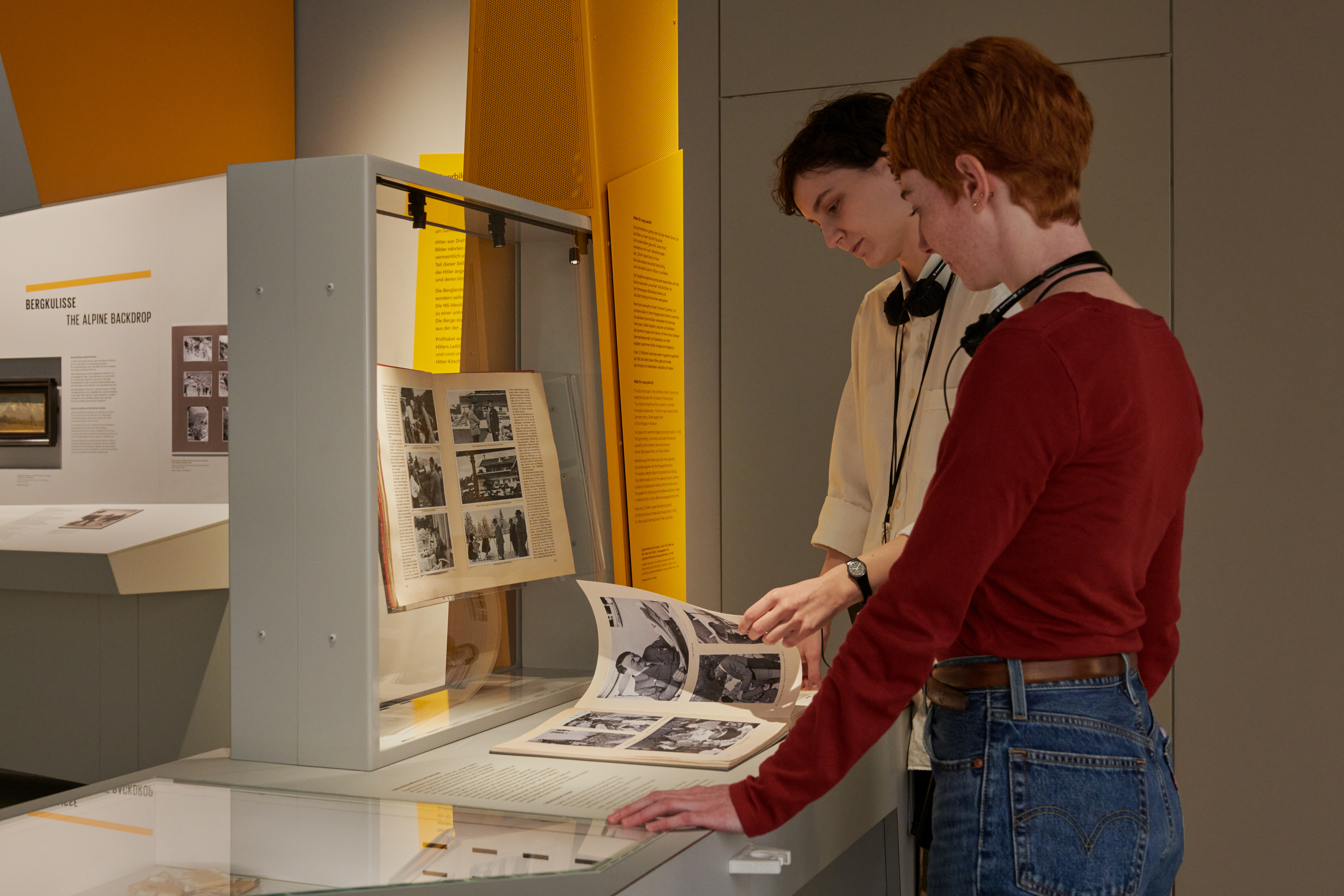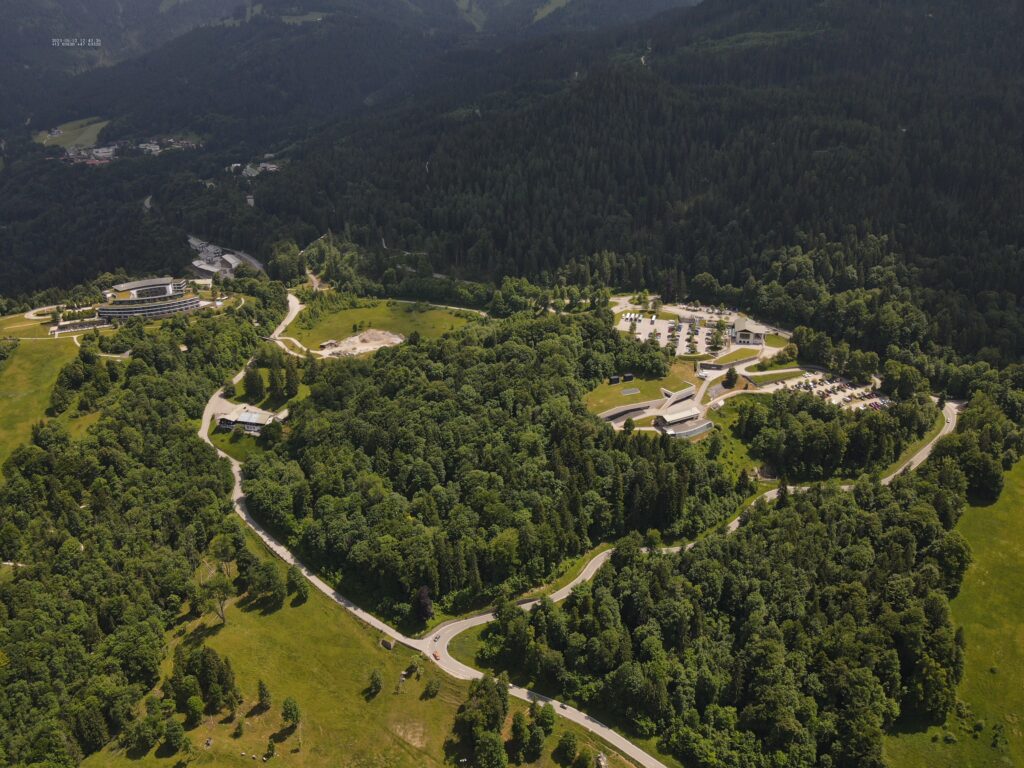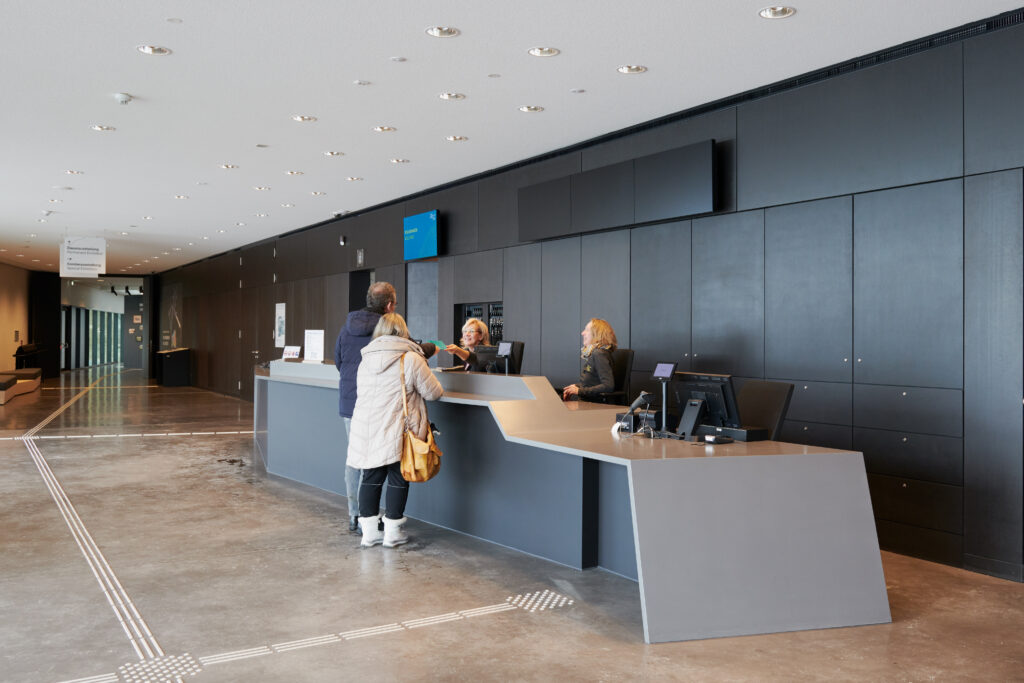Collection
Our collection
The Obersalzberg Documentation Center collects objects, photographs and documents of all kinds that have a connection with the history of Obersalzberg, Berchtesgaden and the region. The main focus of the collection is on the Nazi era, but it also includes objects relating to pre-and post-Nazi history, right up to the present day. The collection forms the basis for our exhibitions and our research on Obersalzberg.
Selected objects from our collection
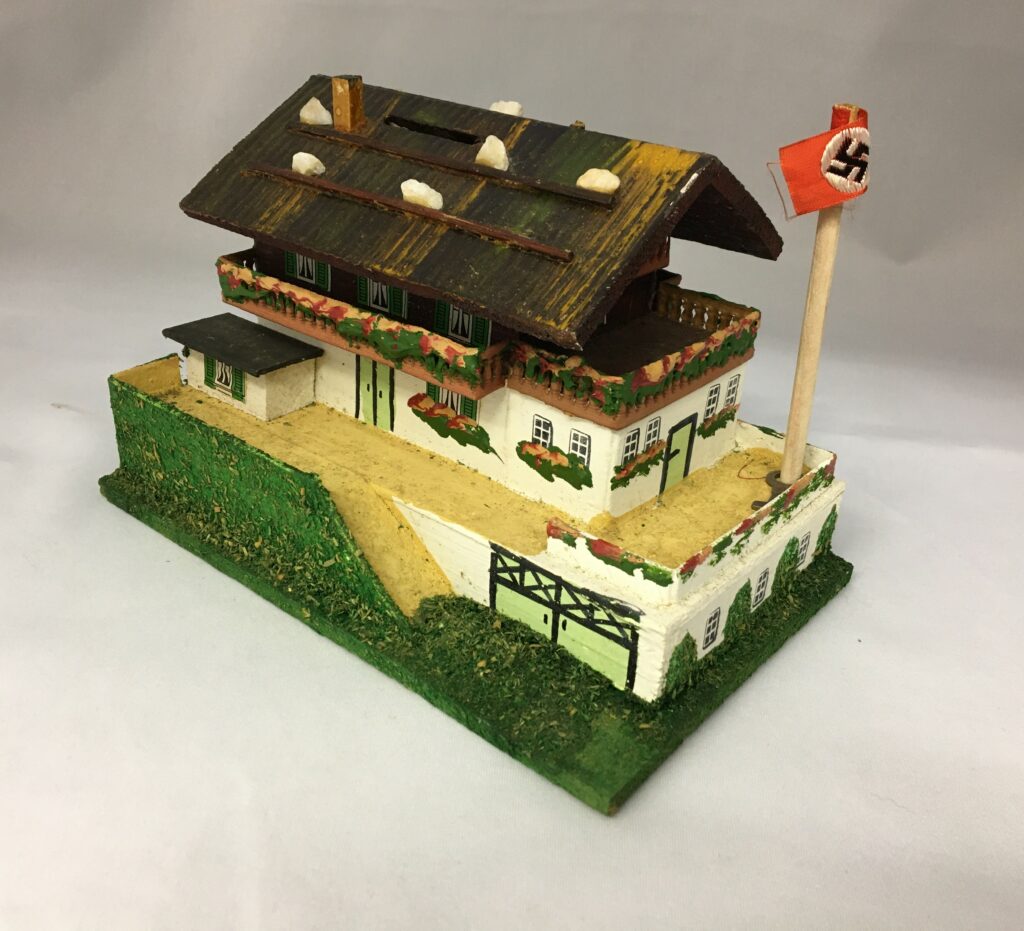
The small wooden model is of Wachenfeld House, Hitler’s residence at Obersalzberg. It is a savings box with a slit in the roof ridge for inserting money and a lockable opening underneath.
This was not an official propaganda product but a souvenir for Hitler’s supporters. Thanks to the crowds who flocked to Obersalzberg, there was a flourishing trade in such devotional objects. However, the Nazi regime soon tried to regulate the trade in Hitler products and to prohibit the sale of “nationalist kitsch”. Wachenfeld House savings boxes like this one were also inspected but continued to be allowed. Thrift was considered a virtue that people liked to associate with Hitler. The existence of such savings boxes meant that Hitler even made an appearance in children’s rooms.
The savings boxes were made in serial production. Different manufacturers made similar models. We do not know who produced and sold this one. It was probably made between 1933 and 1936, before the expansion of Wachenfeld House into the much larger Berghof.
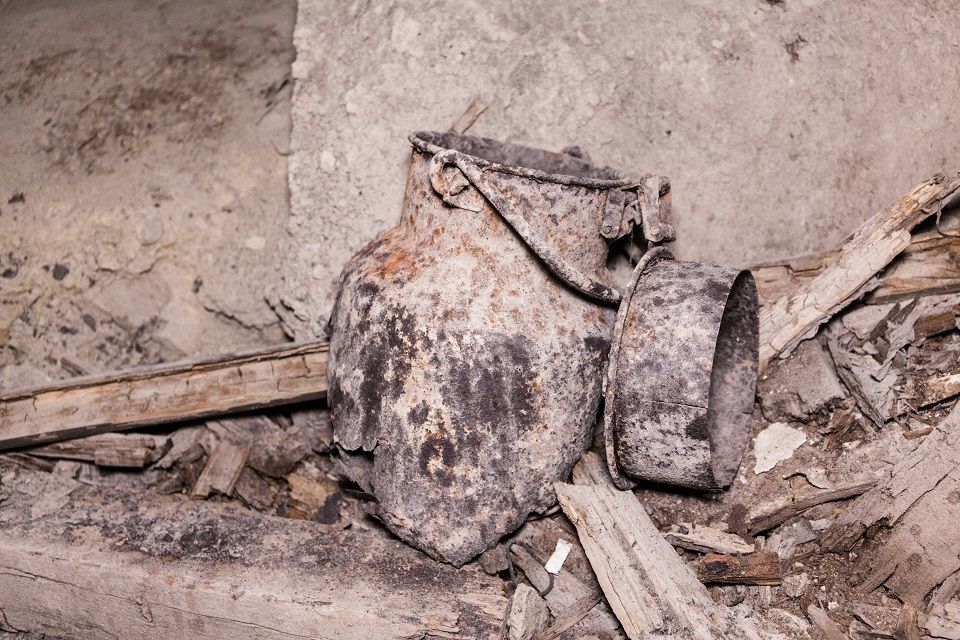
This rusty milk churn had been lying in a bunker at Obersalzberg for more than seventy-five years between splinters of wood and debris. Starting in summer 1943 the Nazis began building a system of bunkers more than six kilometers long under the Führer’s off-limits area, which surrounded Hitler’s mountain residence. At that time the Alpine idyll was a power center of the Nazi regime. Under great time pressure as many as 6,000 workers had to blast tunnels and caverns into the rock and install the most modern facilities. Most of the workers were Czech or Italian forced laborers. Twice during each shift they were given a watery soup that was brought to their place of work in milk churns. To save time, they had to take their breaks underground.
The work was terminated when Obersalzberg was bombed on 25 April 1945. Tools and building materials were abandoned where they lay. When the Obersalzberg Documentation Center opened in 1999, the bunker was almost empty, nonetheless. It had been looted by locals, soldiers and tourists. Only the milk churn remained.
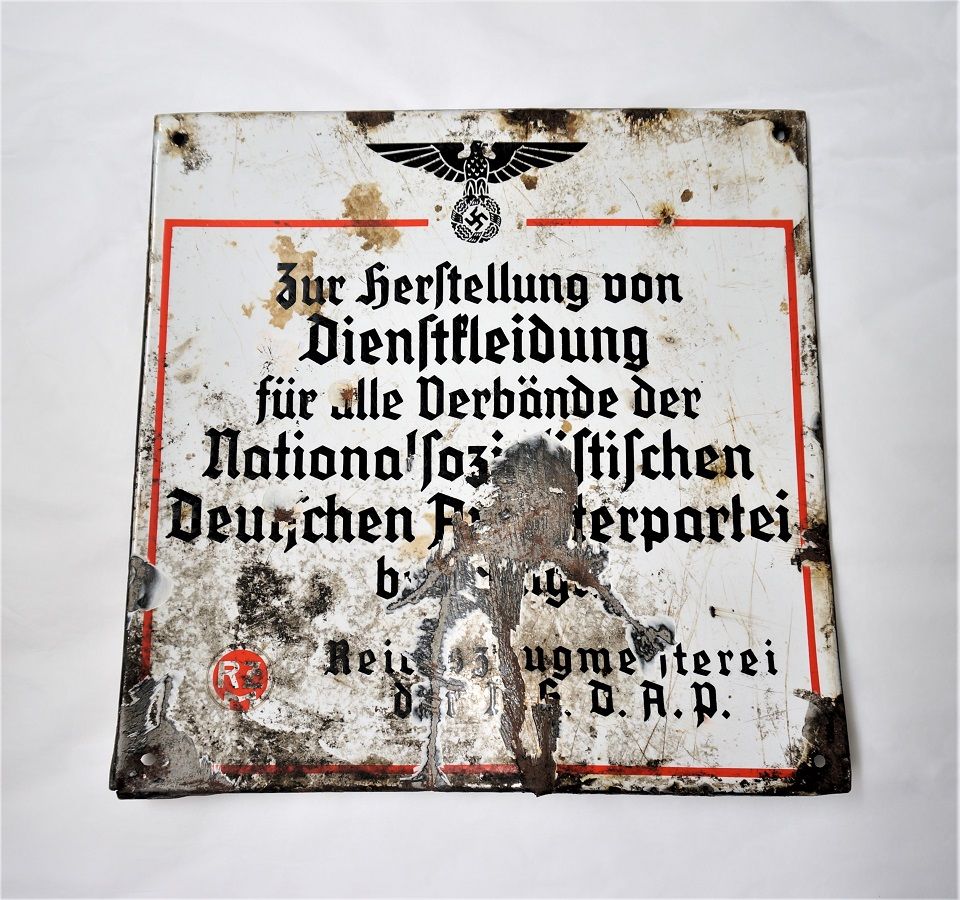
This badly dented and damaged enamel sign was found in the so-called Felber House in Berchtesgaden during renovation work in 2015. For many decades it was used to cover an old fireplace. The partly illegible lettering says that the owner was authorized to produce uniforms and work clothing for the Nazi Party – the NSDAP.
Several thousand people were employed in the Führer’s off-limits area at Obersalzberg between 1933 and 1945. As well as many civilians they also included members of the SS and the staff of NSDAP offices and authorities.
The former owners of the Felber House also owned a tailoring business, which almost certainly made uniforms among other clothing. The sign was removed after the war but not disposed of, and instead used to cover the fireplace. Decades later the new owners gave it to the Obersalzberg Documentation Center.
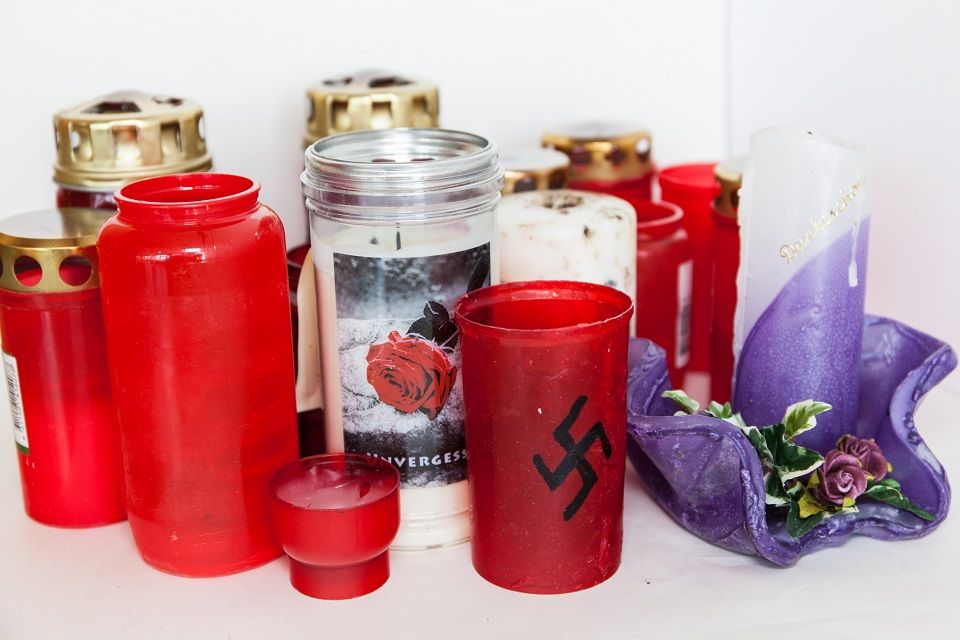
Grave candles and lanterns are everyday objects that we associate with mourning the dead. These grave candles were found in an unusual place: in a forest at Obersalzberg. However, they were a symbol not of mourning but of a political stance. The place where you see trees growing today is where the Berghof, Hitler’s Alpine residence, once stood. Apart from the remains of a supporting wall on the slope and a signboard, there is no clue to the history of this site. The Berghof was damaged at the end of the war and the ruins demolished in 1952. Nevertheless, the site continues to attract many people who are interested in history or simply curious – but also neo-Nazis. The grave lanterns are a clear indication of the latter. One of them bears a swastika drawn with a black marker. Others carry inscriptions like “thank you” and “unforgotten”. Since 2015 the staff of the Obersalzberg Documentation Center have collected more than fifty of such candles and other dubious objects from the Berghof site. The total number of objects left there is probably even higher.
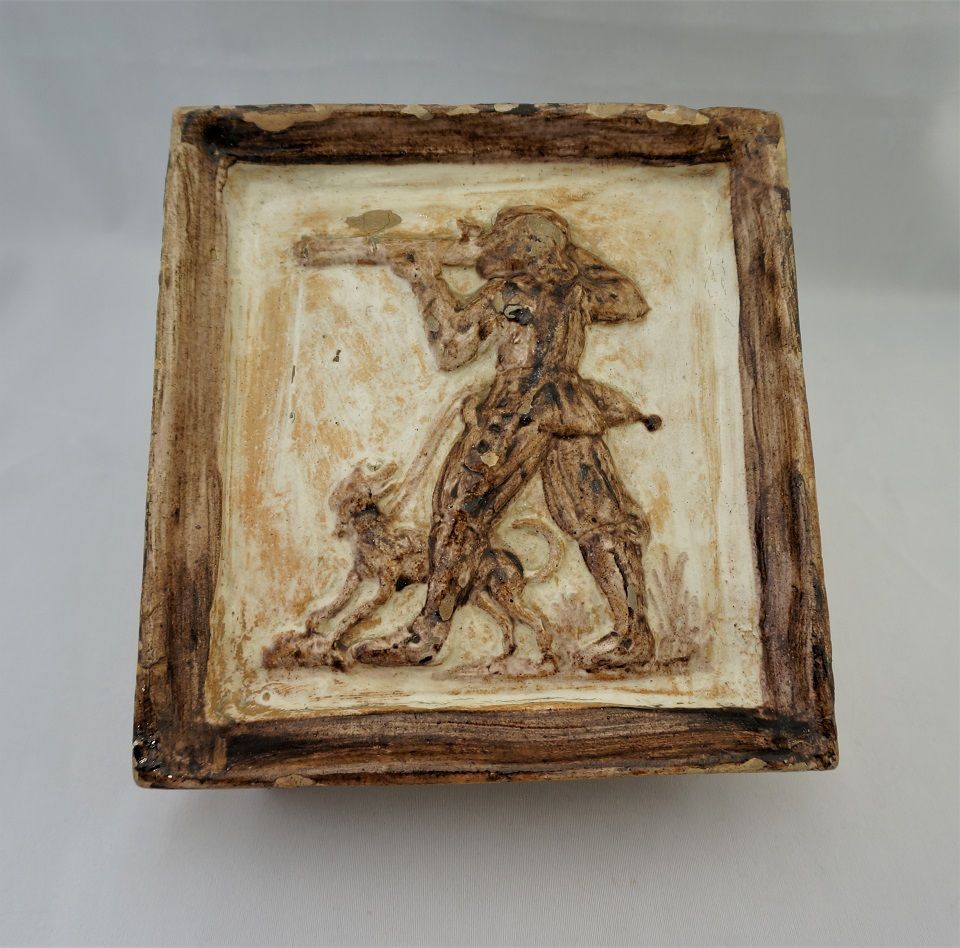
The brown and white stove tile shows a stylized hunting scene, which can be recognized by the hunter and his dog. It is an interior decoration typical of the Berchtesgaden region, where many similar examples can be found. But this particular tile had a famous owner: it was part of the Alpine-style furnishings in Hermann Göring’s house at Obersalzberg, which he moved into in 1934.
Göring was extremely image conscious and would adapt his image to the situation at hand. At Obersalzberg he would often appear wearing local traditional costume, including Lederhosen, and he presented his house as a cozy rustic home in the mountains, complete with a tiled stove for which this tile was probably handmade.
After the war the tile came into the possession of a family who lived a few kilometers away from Obersalzberg. The father and son of the family had removed them from the ruins of Göring’s former house. It was not uncommon at that time for people to visit the former residences of Nazi bigwigs and take “souvenirs” with them. The former Führer’s off-limits area soon became an attraction for sensation hunters.
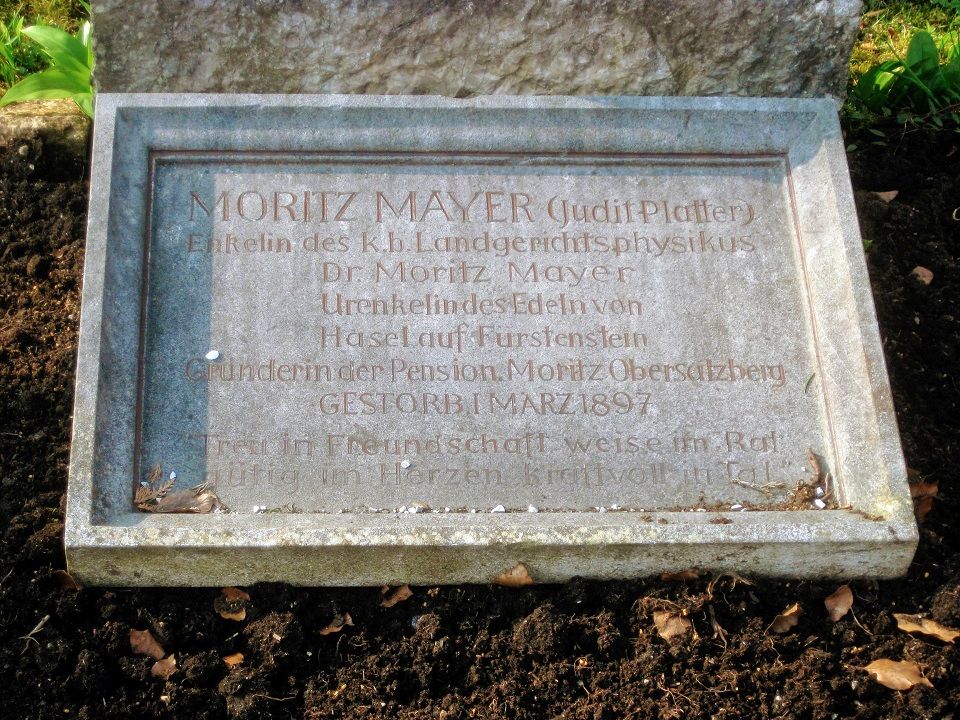
The memorial plaque reflects 150 years of Obersalzberg history. Mauritia “Moritz” Mayer was the first person to open a small hotel in the Alpine village of Obersalzberg in 1878. Among her famous guests was the writer Richard Voß, who wrote the bestseller known as Zwei Menschen (Two People). Mayer served as a model for the novel’s character Judith Platter.
Later owners of the hotel tried to turn this to their advantage. Bruno Büchner renamed it Hotel Platterhof. In 1928 he put up a memorial plaque at the entrance and an identical copy of it at Mayer’s grave in the Berchtesgaden cemetery. Both plaques bore the name Judith Platter as a way of advertising the hotel.
Hitler stayed at the Platterhof several times before he found his own house in the neighborhood in 1928 – the house that was later to become the Berghof. Despite his close connections with Nazism, Büchner was forced to sell the hotel in 1936. From then on, the “people’s hotel” in the Führer’s off-limits area was reserved for special guests. After 1945 the hotel’s name was changed once again to the “General Walker” and it became part of the US Army’s Recreation Area. When the US forces vacated the site in 1996, the plaque was still hanging in the entrance. After the building was demolished in 2001, the sign was brought to the Obersalzberg Documentation Center.
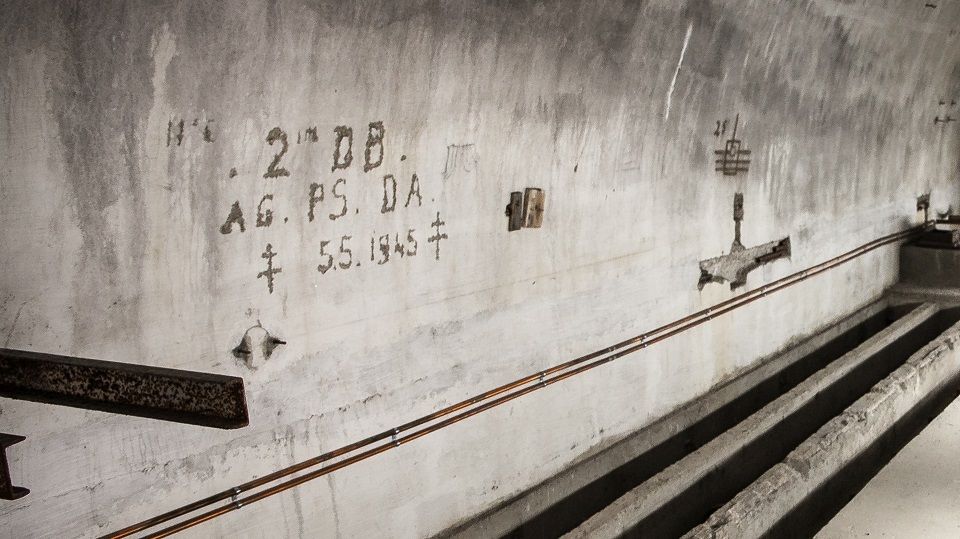
An inscription on a wall of the Obersalzberg bunker reads: “2im DB AG. PS. DA. 5.5.1945”. Three soldiers scratched the letters and numbers deep into the concrete wall to record the Allied victory over the Third Reich for posterity. But what do the numbers and abbreviations mean?
The first Allied soldiers entered the six-kilometer-long bunker complex at Obersalzberg on 5 May 1945. The tunnels were deserted, and there was no struggle. Three soldiers left behind their initials – AG, PS and DA – and the name of their unit: Deuxième Division Blindée, the Second French Armored Division. The division had reached Obersalzberg the day before simultaneously with two US units. Who was there first is still a matter of controversy today. Hitler’s Alpine idyll was considered the final “fortress” to be conquered in World War II. The French soldiers marked their triumph with two Crosses of Lorraine: the symbol of their division and of French resistance to Nazism.
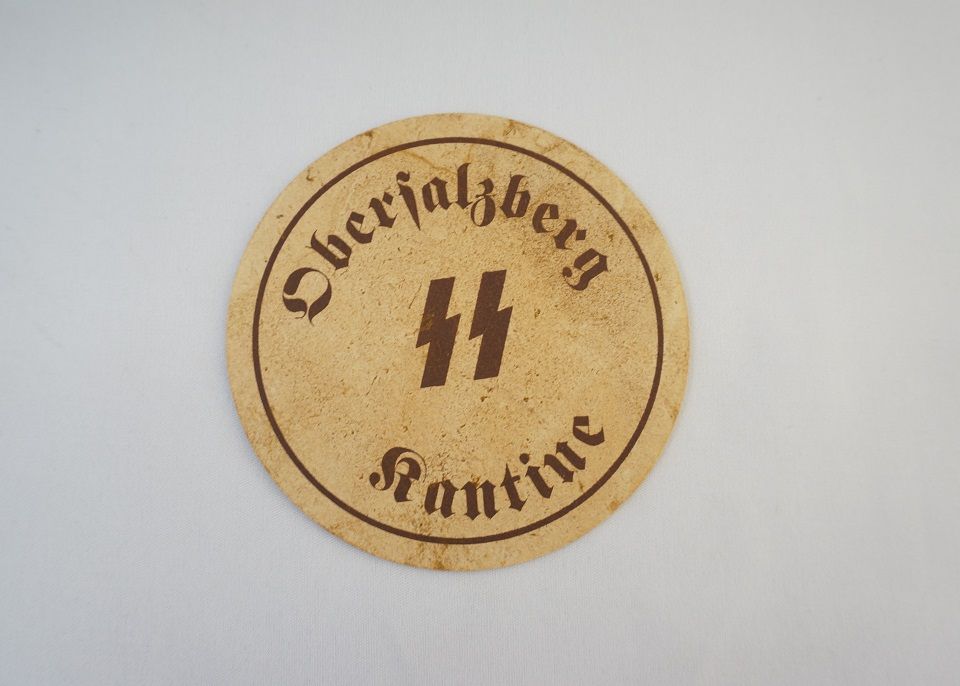
Objects from the Nazi era continue to be highly susceptible to forgery. Among them are many objects with a connection to Obersalzberg. Simply everyday objects, wall tiles and other banal items fetch extremely high prices if they appear to have come from Hitler’s Berghof or other buildings. Some objects are copied, others newly invented – like this beermat. The imprint on it suggests that it was used in the barracks for SS guards at Obersalzberg. Although the barracks did have a canteen, there is no evidence that it had its own beermats. What is certain, however, is that this beermat is a forgery. The logo of the local brewery on the upper side was not used until the 1970s. Beermats from the 1930s looked different.
A selection from our collection on museum-digital:
We’re always looking for new objects!
Historical items are always turning up in drawers, attics and basements: photo albums, diaries, letters or objects of all kinds. Please don’t throw them away! We are very happy to receive such things and preserve them for the future if they fit our collection’s profile. If you are reluctant to part with your treasures we can make scans of them, which will be returned to you together with the original. The story behind your object is especially interesting, so please get in touch with us.
Collection management of the Obersalzberg Documentation Center
Telephone +49 (0) 89/126 88-253
E-mail: sammlungobersalzberg@ifz-muenchen.de
What do we collect?
Each object in an exhibition has a story to tell. The Obersalzberg Documentation Center therefore collects and researches all kinds of things that have to do with the history of Obersalzberg, everyday life in the region and the fate of the victims of Nazism. The focus is naturally on the years of the Nazi regime. But we also seek objects telling the pre- or post-history of Nazism, right up to the present day: not just about the Führer’s off-limits area but also the history of the Alpine village that disappeared or the Recreation Area of the US Army and tourism after 1945.
